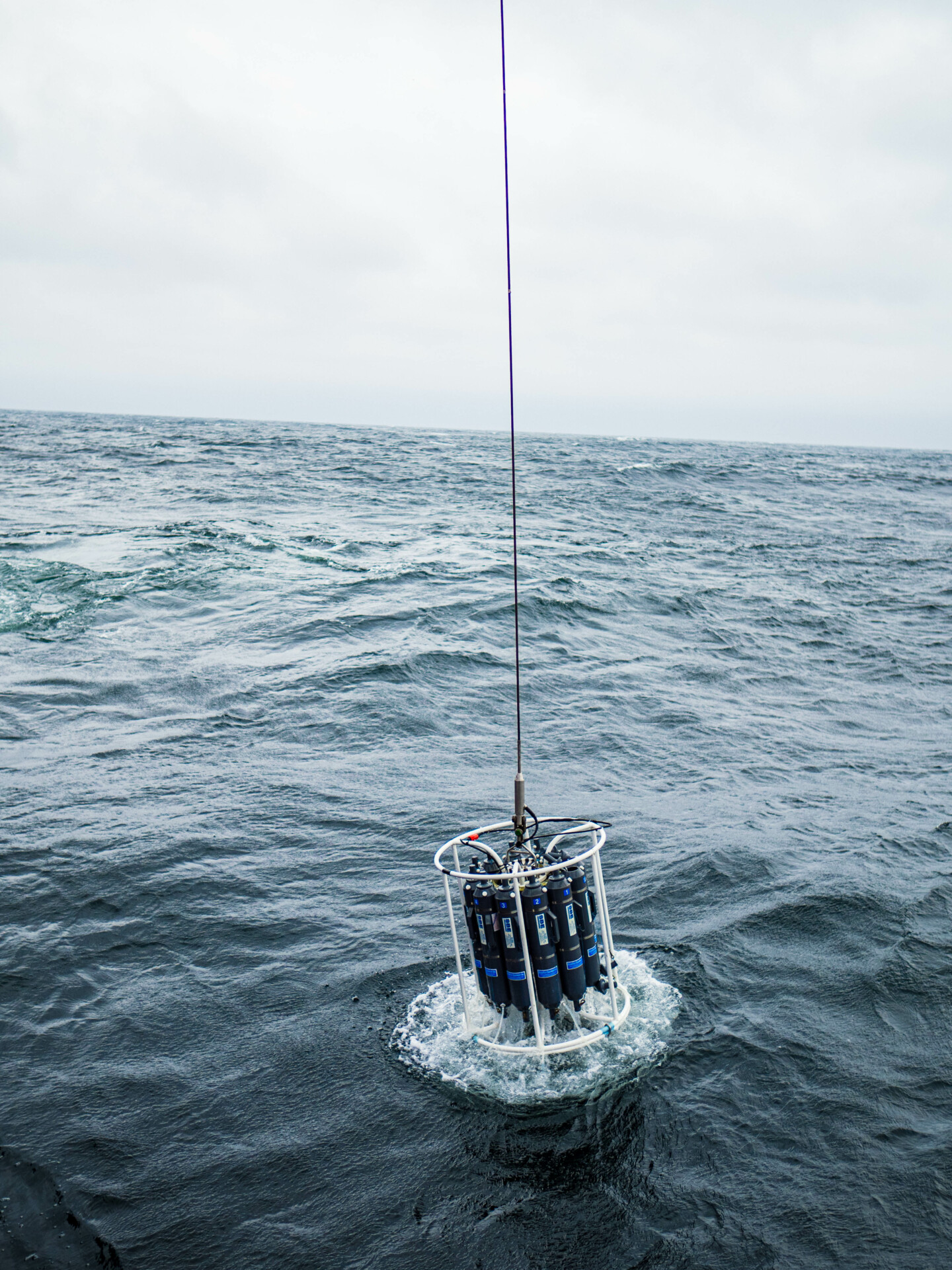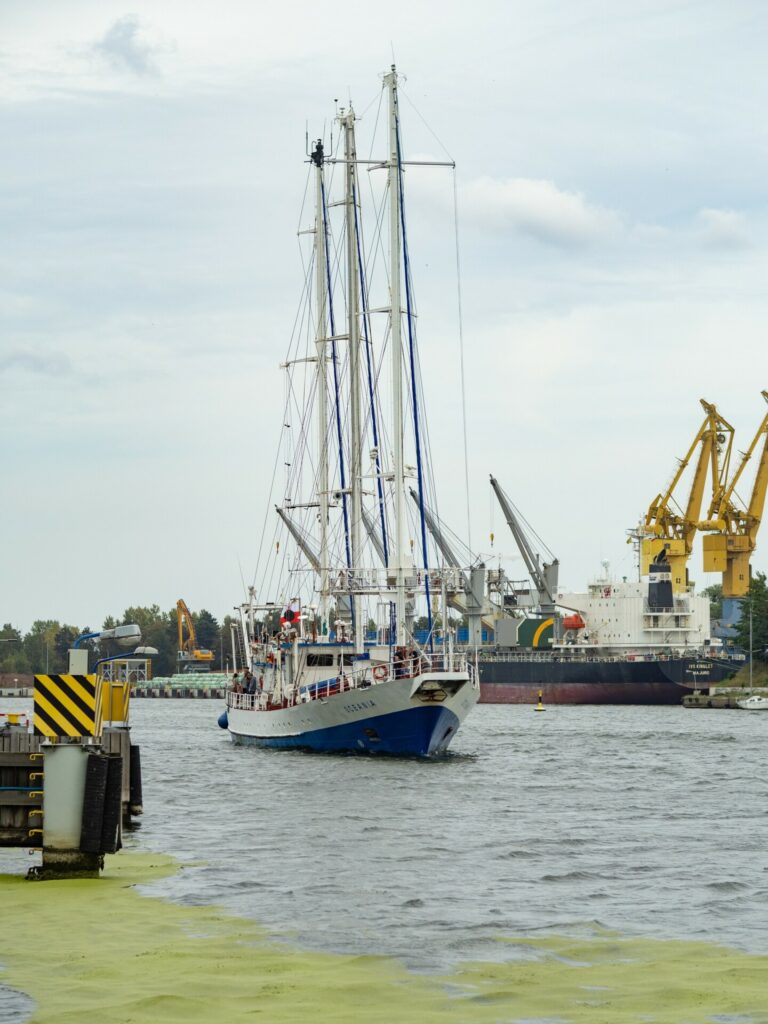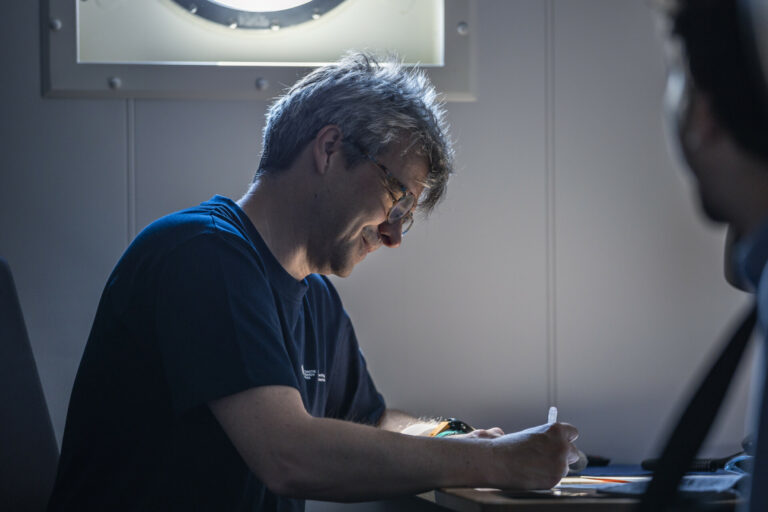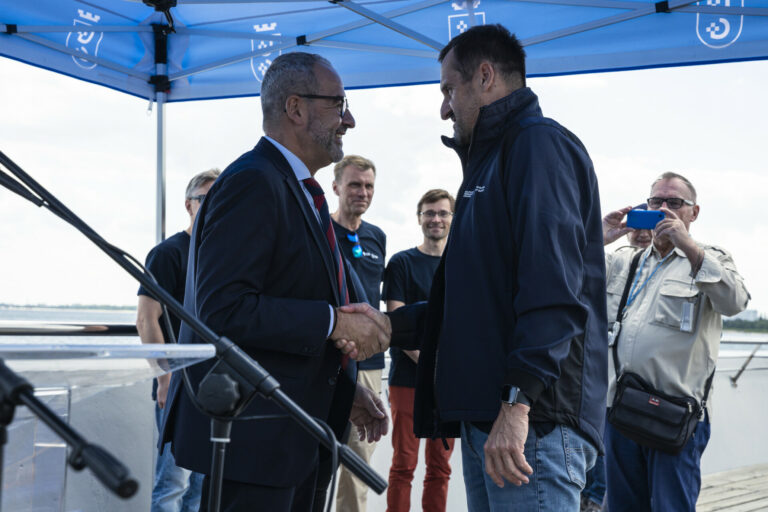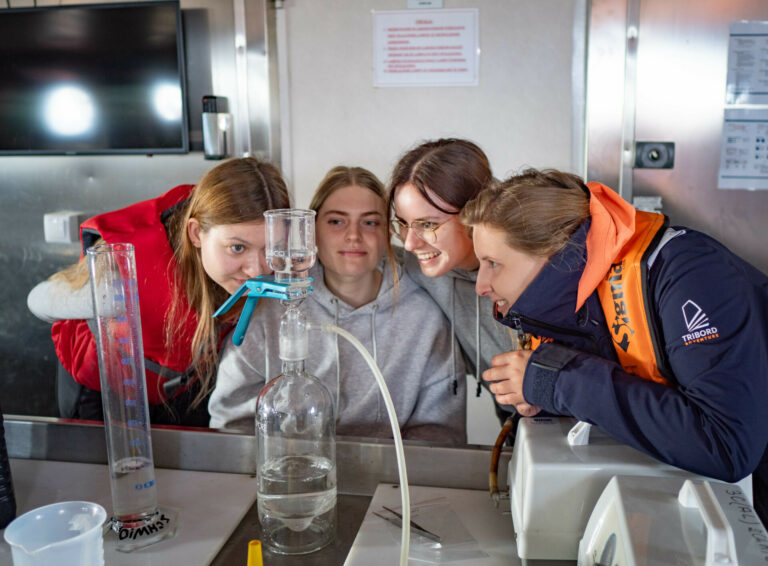How do the scientists on board the r/v Oceanograf collect water samples from the exact depth they need, and why during the BaltArcitc cruise they throw half of it away? It’s all down to the rosette – one of the most important pieces of equipment in an oceanographer’s toolbox.
The rosette consists of 12 Niskin Bottles. This means that instead of dropping a single Niskin Bottle 12 times at different depths, which takes at least an hour, scientists lower a rosette and collect up to 12 samples at different depths in one go. So the rosette is first and foremost a time saver.
Each Niskin Bottle is a cylindrical device that has to be armed, or opened, before each dive. The armed rosette is then submerged to the appropriate depths and the researchers close each Niskin Bottle individually with an electromagnetic pulse. The rosette is also fitted with a CDD sensor that reads values such as temperature, salinity, sea density, pH and oxygen.
So why do the scientists on the BaltArctic Research Cruise pour away half of their rosette samples?
‘At each research station, water is sampled twice with a rosette. First, we collect samples for Lillie Freemantle, a PhD student at the University of Cadiz, who needs them for organic compound analysis. For these studies, she usually requires between 1 and 3 litres of water from a given depth, while a single Niskin Bottle has a water capacity of about 7.5 litres,’ says research team member Magdalena Machuta from the University of Gdansk. ‘The second rosette is for the scientists from the University of Gdansk and the Institute of Oceanology PAN. But the r/v Oceanograf is quite a small ship and we have no place to store all these samples, so we throw the ones we don’t need back into the sea.’
The BaltArctic Cruise scientists will be looking at all sorts of properties in the water samples that might indicate the influence of the Baltic Sea on the waters of the northern seas. In particular, they are going to seek different types of mercury compounds, known as fractions, as well as the amount of suspended matter, pharmaceuticals or toxic substances such as PAHs, nutrients and the currently ‘hot’ topic of microplastics.
As the water in the Baltic Sea has lower salinity level than in the North Sea and Norwegian Sea, it is also lighter. This means that the scientists focus on the layers above 50 metres, as the average depth of the studied research stations is around 100 metres.
‘At the end of this cruise we will have so much different data and it will be our job to systematise it. There are so many aspects to explore, so many correlations to make, that we will definitely have something to work on’ says Magdalena Machuta. ’I’m really excited that our students are part of this process, because they can see the value of working in an international, multidisciplinary research team.’
See more oceanographic tools in this gallery:
